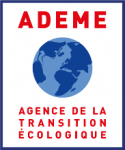COFUND PhD position - Marine Ecology / Conservation
| ABG-133794 | Thesis topic | |
| 2025-10-13 | EU funding |

- Ecology, environment
Topic description
Title of the thesis project: Disentangling the influence of natural and man-made threats on prey-predator interactions in coastal ecosystems
Context
While the world population clock ticks at 8.2 billion today, the UN predicts 10.4 billion in 2086. How are these billions of people going to be fed? The search for sustainable protein sources to serve as the food base to terrestrial and marine farms now reach the most inhospitable regions of the Earth. Among them, the Southern Ocean surrounding the Antarctic continent, and its still largely unknown biomass of krill and fish, are seen as potential food reservoirs by many nations including those with unprecedented fishing capacity vessels like China, South Korea or Norway. Determining the quantities available of these key species that hold such a huge socio-economic interest, is of primary importance in order to exploit them over the long term in a sustainable way. However, Antarctica is experiencing diverse and multifaceted pressures that threaten the stability of its ecosystems. Climate change is impacting the entire continent, with rising temperatures, melting as well as increase in sea ice, and changing oceanographic conditions altering both terrestrial and marine environments. These shifts affect the availability and distribution of those critical prey species sought by fisheries but also heavily consumed by higher predators like whales, seals or seabirds. Threats, however, do not affect the continent equally. Some regions of the Antarctic are more sensitive than others to man-made threats, while other regions remain more protected from human influence. For instance, the East Antarctic region - where France possesses a research station - faces essentially climate-change related threats, with limited human settlements and almost no tourism or fisheries as sea-ice conditions still form a barrier to human exploitation. A contrario, the Western Antarctic Peninsula (WAP), projecting to lower latitudes, and being thus less intensively covered by sea ice, stands out as one of the most rapidly warming regions on Earth but is also under intensifying socio-economic pressure. This area experiences high levels of tourism as well as intense krill fishery activities, raising concerns about potential competition with marine higher predators such as penguins, seals, and whales. These combined pressures create complex challenges for conservation, requiring integrative research that links biological responses to both environmental and anthropogenic drivers. Yet, this regional diversity in threats faced by coastal ecosystems offers at the same time a unique opportunity to disentangle the effects of these different threats on marine ecosystems. To this end we propose to compare ecosystems between a zone only impacted by climate change (East Antarctic) with one where other threats (namely tourism and fisheries) adds to the effects of climate change (the Antarctic Peninsula).
Studying ecosystems is often complicated, especially in the remote Antarctica. To address this difficulty, ecosystem sentinels such as marine predators can be used as they are highly responsive to environmental fluctuations, providing vital information on ecosystem structure and change. Adélie penguins (Pygoscelis adeliae) are distributed and breed around the entire Antarctic coast. During the austral summer, these predators engage in energetically costly activities: breeding on land and regularly performing foraging trips at sea engaging in swimming, diving and hunting prey for themselves and their chicks. Depending on site and environmental conditions, Adélie penguins can travel between 20 to 88 Km offshore during the chick-rearing season (December to mid-January). While krill (Euphausia superba and E. crystallorophias) form a significant part of their diet, these species also consume Antarctic silverfish (Pleuragramma antarctica), jellyfish, squid, and other prey types, each influenced by climate variability and fishing pressure. From the above, Adélie penguins are clearly sensitive to changes in prey availability and sea-ice conditions. Despite extensive population monitoring, there remain critical knowledge gaps in understanding the fine-scale energetic trade-offs (energy spent versus energy intake while feeding) these predators make under shifting prey landscapes, presence of human pressure and environmental conditions. Quantifying how penguins adjust their foraging effort and energy intake relative to these factors, referred to as their functional response, is essential for ecosystem-based management and conservation planning. In this regard, Adélie penguins are recognised as a key indicator species under the Commission pour la conservation de la faune et la flore marines de l'Antarctique (CCAMLR, www.ccamlr.org/fr) Ecosystem Monitoring Program (CEMP), The CCAMLR is the international body in charge of the conservation of Antarctic marine ecosystems, under the Antarctic Treaty System.
Our main objective is thus to compare the Antarctic coastal ecosystems through prey-predator energetics between a site only impacted by climate change (Dumont d’Urville) and a site with the additional pressures of tourism and fisheries (Ardley Island). Ardley Island (62°13′ S, 58°56′ W), in the southwest of King George Island/Isla 25 de Mayo, South Shetland Islands is an Antarctic Specially Protected Area (ASPA N° 150) in the Antarctic peninsula, projecting towards lower latitudes. Breeding population size and breeding success of penguin species has been monitored since the 1980s. The numbers of breeding pairs of Adélie penguins have decreased by more than 30% since counts began, reaching the minimum of 184 breeding pairs in the 2022/2023 season. The Peninsula is one of the most visited places by tourists in Antarctica (more than 118 000 visitors in the 2024-25 season according to the International Association of Antarctic Tour Operators IAATO) and Ardley Island is located within CCAMLR’s area 48, where more than 95% of Antarctic krill is currently harvested. On the other side of the continent, Dumont d’Urville station on Île des Pétrels in Terre Adélie (66°40′S, 140°01′E) is home of nearly 20 000 pairs of Adélie penguins nesting on the main island, a population whose breeding activity has been monitored annually since the late seventies and for at-sea activities since 1998. The colony of penguins has been stable for several decades. It is monitored as part of a long-term program supported by the CNRS and the French polar Institute and is identified as a CEMP site.
Objectives
For each of these two sites, the student will:
- Learn to use GPS, acceleration, depth and video data to classify prey types, quantify energy spent to capture prey across dives, and identify behavioural responses to different prey types using advanced analytical workflows (e.g., machine learning, time series models).
- Integrate these findings with the SCAR (Scientific Committee on Antarctic Research) Southern Ocean Diet and Energetics Database (https://zenodo.org/records/5072528) to extract estimates of prey-specific energy content.
- Determine energy functional responses (energy intake versus energy spent) to different patch types (e.g., single krill, krill swarms, fish, jellyfish) across spatial and temporal scales.
Then, the student will use this information to compare foraging strategies and energetic trade-offs between Ardley Island and Dumont d’Urville sites, each of which is characterized by contrasting environmental drivers (e.g., sea-ice variability, presence of human activity). Identifying key foraging areas for penguins, particularly around Ardley Island, to highlight zones where minimizing overlap with fisheries is crucial, both to reduce interference competition and to prevent incidental penguin mortality associated with fishing activity.
Ultimately, the student will provide relevant information to inform small-scale management in Antarctica. She/he will contribute to CCAMLR management goals by estimating how much prey Adélie penguins require across regions, helping define foraging areas of ecological significance to support Marine Protected Area (MPA) planning. This work will contribute to CCAMLR's development of a feedback management system for the Antarctic krill fishery and the design and implementation of candidate scientific reference areas to monitor natural variability and long-term changes, addressing major challenges related to environmental functioning and evolution under climate change and growing anthropogenic pressures, as framed within Smart Urban Coastal Sustainability.
Challenges
- Cross-site data standardisation and integration: harmonising bio-logging data collected at different locations, under varying environmental and logistical conditions, is critical for meaningful comparisons and requires careful standardisation of methods and metrics. This project will test candidate metrics such as time spent diving, hunting and energetics.
- Development of a unified analytical workflow: creating a robust, scalable workflow that can be applied across both study sites to analyse behavioural, energetic, and ecological data, integrating machine learning, time series analysis, and energy modelling, presents both technical and conceptual challenges.
- Protocol harmonisation and collaborative science: developing common research protocols and analytical standards that can be adopted across Antarctic research programmes will promote scientific exchange and long-term collaboration, contributing to coordinated ecosystem monitoring efforts.
- Integration with policy frameworks (e.g., CCAMLR): translating ecological insights into actionable information for ecosystem-based management requires a clear link between predator energetics, prey availability, and fisheries activity, posing both a scientific and communication challenge. Luckily, the participants to the project are active in the French and Uruguayan delegations at CCAMLR and can help the student get involved in these arenas.
Methods
This PhD project will leverage bio-logging technologies, including GPS, accelerometers, and video loggers, to empirically assess predator energetics and prey interactions. Datasets are sourced from ongoing long-term Adélie penguin population monitoring from two contrasting sites: Ardley Island (South Shetland Islands) and Dumont d’Urville Station (East Antarctica), spanning areas with different environmental conditions and levels of human impact.
The student will have access to a suite of already developed and calibrated analytical methods produced by our two groups (CEBC and Bangor). Over the past decades, i) we have developed scripts to analyse automatically large bio-logging datasets on horizontal and vertical movements, as well as accelerometry to derive behaviour of birds, ii) we have used Machine Learning to identify automatically the prey encounters and captures, iii) using a calibrated doubly-labelled water experiment we have an equation to define energy spent by penguins from accelerometry data, and iv) from the open-access database of SCAR the student will be able to integrate the energy content of prey and therefore the energy gained by penguins.
This project employs AI-driven models to analyse ecological data from non-human subjects (penguins) only, avoiding any personal or sensitive data. Throughout my career (and the MSCA fellowship) I have developed and used AI driven models applied to data collected from wild species (see Chimienti et al. 2016, 2022; Dupuis et al 2024). All datasets and models have been made publicly available in the manuscripts’ appendix, data repositories and the GitHub account dedicated to myMSCA project:
https://github.com/MariannaChimi/MuFFIN_MSCA/releases.
End-users are informed that the models can detect patterns in animal behaviour and ecology (abilities), but their applicability is limited to the trained datasets (based on species) and subject to uncertainty (limitations). Benefits include advancing ecological knowledge and ensuring open, reproducible science, while risks mainly concern potential misinterpretation of outputs if used beyond their intended scope. To minimise bias, datasets are collected using standardised ecological protocols, carefully documented, and made openly available. Models are tested with multiple approaches to ensure robustness and transparency (see Chimienti et al. 2022). Ethical risks include misuse or misinterpretation of models (always within the ecological context); mitigation is achieved by full documentation of assumptions, open accessibility for peer scrutiny. Restricting analyses to wildlife data removes concerns around human privacy or consent.
In addition, the collaboration with the Uruguayan group has been on-going for more than 5 years now.
Expected results
- New insights into ecological adaptation across environmental gradients (with and without human pressure, as well as climate variability). By comparing Adélie penguin energetics in regions with differing levels of human activity and climate impact, the project will enhance understanding of how a single species adapts its foraging strategies to distinct ecological pressures.
- Setting standards for ecosystem management processes. Applying similar approaches to two sites across Antarctica will pave the way for expanding the application of standard procedures to other sites across the continent. This will contribute to homogenize ecosystem investigations at both regional and Pan-Antarctic scales, e.g. through a dedicated work package in the Antarctica InSync initiative (www.antarctica-insync.org/).
- Development of feedback management systems for the commercial fishery for Antarctic krill, Quantifying energy intake and expenditure across prey types and regions will inform the development of feedback management systems for Antarctic krill fisheries, contributing to CCAMLR’s long-term ecosystem monitoring efforts.
- Designing human-wildlife mitigation strategies for the sustainable use of natural resources.
By identifying areas of spatial overlap between penguin foraging zones and areas characterized by contrasting environmental drivers (e.g., sea-ice variability, presence of human activity), the project will contribute to the design of strategies that minimise ecological disruption. These findings will inform sustainable practices that reduce conflict, protect biodiversity, and ensure long-term viability of both ecosystem services and socio-economic activities.
Starting date
Funding category
Funding further details
Presentation of host institution and host laboratory
Since its creation in 1993, La Rochelle Université has been on a path of differentiation.
Thirty years later, as the university landscape recomposes itself, it continues to assert an original proposition, based on a strong identity and bold projects, in a human-scale establishment located in an exceptional setting.
Anchored in a region with highly distinctive coastal features, La Rochelle Université has turned this singularity into a veritable signature, in the service of a new model. Its research it addresses
the societal challenges related to Smart Urban Coastal Sustainability (SmUCS).
The new recruit will join the Centre d’Etudes Biologiques de Chizé.
Cotuelle: Bangor University, UK. School of Ocean Sciences.
Institution awarding doctoral degree
Candidate's profile
Good theoretical background in marine ecology and ecosystem functioning required. Ability to communicate proficiently in English required. Any knowledge in bio-logging or animal-tracking approaches and analyses is greatly appreciated. Capability in coding (R, python, else) is considered a plus.
Vous avez déjà un compte ?
Nouvel utilisateur ?
Get ABG’s monthly newsletters including news, job offers, grants & fellowships and a selection of relevant events…
Discover our members
 Ifremer
Ifremer  Groupe AFNOR - Association française de normalisation
Groupe AFNOR - Association française de normalisation  TotalEnergies
TotalEnergies  MabDesign
MabDesign  Laboratoire National de Métrologie et d'Essais - LNE
Laboratoire National de Métrologie et d'Essais - LNE  Aérocentre, Pôle d'excellence régional
Aérocentre, Pôle d'excellence régional  SUEZ
SUEZ  MabDesign
MabDesign  ADEME
ADEME  Nokia Bell Labs France
Nokia Bell Labs France  CESI
CESI  Institut Sup'biotech de Paris
Institut Sup'biotech de Paris  Tecknowmetrix
Tecknowmetrix  PhDOOC
PhDOOC  CASDEN
CASDEN  ASNR - Autorité de sûreté nucléaire et de radioprotection - Siège
ASNR - Autorité de sûreté nucléaire et de radioprotection - Siège  ONERA - The French Aerospace Lab
ONERA - The French Aerospace Lab  Généthon
Généthon  ANRT
ANRT

